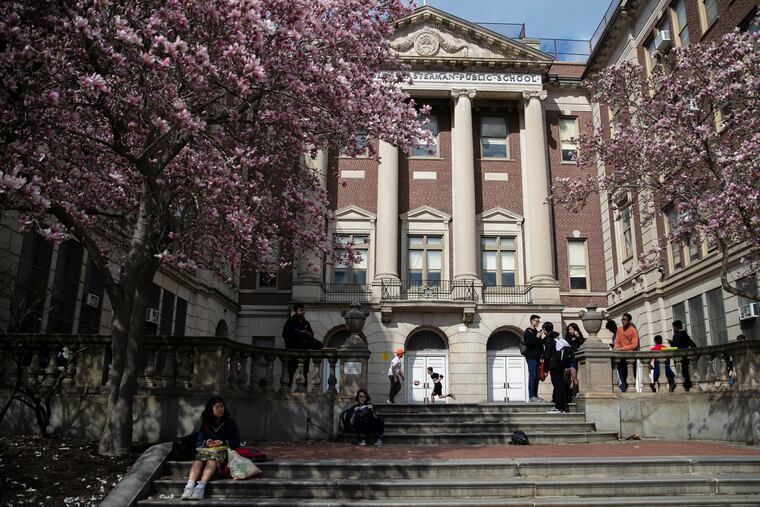Pennsylvania says in-class teaching can resume July 1, but schools still have issues to resolve
Pennsylvania teachers and students will be permitted to return to schools as soon as July, but school board association says districts are “still a long way” from resolving all the issues they need to welcome children and staff back into the buildings.

Pennsylvania teachers and students will be permitted to return to schools next month, the state Education Department announced Wednesday, though districts will make their own decisions on whether to reopen.
According to preliminary guidance issued by Education Secretary Pedro Rivera, pre-K-12 schools in counties that have reached either the “green” or “yellow” phase of the state’s coronavirus reopening plan may resume in-person instruction on July 1, while colleges in those counties can restart in-person learning on Friday.
Schools will be required to adopt their own health and safety procedures that meet both federal and state guidelines.
While the state is permitting in-person instruction, it is not requiring it. Officials said both pre-K-12 schools and colleges would be allowed to decide whether they resume in-person instruction, and at what levels. They will be required to submit their plans to the Education Department, but the state won’t be formally approving them, leaving that authority to local districts.
“Schools are going to have to engage their communities and their specific needs through this plan," Rivera said. He noted that “not every parent will want to or be able to send their children back to school,” and remote learning may well be part of districts’ plans for the coming school year.
The guidance comes as schools and districts have been grappling with how to address the logistical concerns around reopening buildings while maintaining social distancing.
A spokesperson for the Pennsylvania School Boards Association said the guidelines “are a start” but don’t address some larger issues that schools may encounter.
“We are still a long way from reopening schools in Pennsylvania, but this guidance will cause schools to begin having conversations about what a return to school might look like in their respective community,” said the spokesperson, Annette Stevenson.
A task force of statewide education organizations, including the PSBA, is set to release its own recommendations later this month. That group is looking at recommending redesigns of facility layouts as well as staggered schedules for students in a bid to reduce class sizes.
Stevenson said such scheduling “would create numerous logistical, labor and financial implications for schools,” adding that “the right scenario is going to vary county to county and district to district.”
In areas like school cafeterias, “it’s pretty hard to maintain six feet of distance" when you have many students in one space, said Chris Lilienthal, a spokesperson for the Pennsylvania State Education Association, which represents teachers and staff.
The guidance released by the Department of Education does not specify exactly how schools should handle cafeterias — or prescribe specific class sizes, apart from noting that the Centers for Disease Control and Prevention “recommends no more than 25 individuals including staff" in a classroom.
But it lays out a list of possible considerations in different categories, including for maintaining social distancing.
Among the suggestions: holding classes in gyms, auditoriums, or other large spaces, and turning desks “to face in the same direction or have students sit on only one side of tables, spaced apart.”
“Schools can then personalize those expectations based on the needs of their classrooms,” Rivera said Wednesday during a news conference.
Other parts of the guidance call for steps to protect students and staff at higher risk of severe illness — suggesting that schools implement flexible attendance policies, for instance — and to lay out protocols for monitoring students and staff for symptoms.
Rivera noted that a resurgence of the virus may force schools to close again after reopening. “We are planning for the best in terms of school instruction, but we are planning for the worst,” he said.
Some districts plan to begin classes prior to traditional start dates in September and will be permitted to do so, Rivera said. He said some districts have also signaled that they are preparing for in-person summer school, while others have decided to go virtual.
Rivera acknowledged unresolved complications — including whether younger children or those with special needs would be able to wear masks.
And social distancing guidelines will certainly “change the methodology by which we transport students to and from school," he said.
Pennsylvania has looked to other states for guidance, but also internationally to identify “what works, what’s being tried, and the efficacy of what works going forward," the education secretary said.
Best-case scenario, he said, is having all students and staff back in classrooms this fall.
“The worst-case scenario," he said, "is that we continue with full online virtual instruction as we are.”
Staff writer Rob Tornoe contributed to this article.